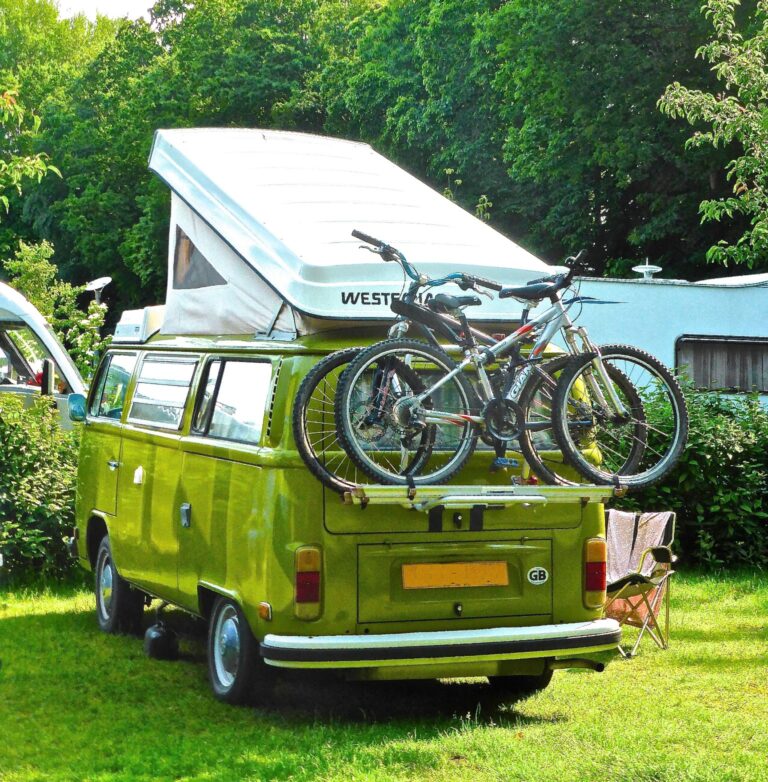Converting vans into “dayvans” is a very popular conversion.
The storage space in the rear has been transformed into a fold-out chair/bed, a few cabinets and an entertainment battery.
This is a simple day van, and it doesn’t hold much. A bug-out vehicle should be a bit larger than a standard day van.
We will discuss bug-out vehicles, including their advantages and disadvantages. The best fuel for a van is discussed, as well as how you can prolong its fuel life and compare it to the mileage of a motorhome/RV.
The two vehicles are not the same and may be used to serve different purposes.
Today’s article will look at:
- What’s in a bug out van, and why is it a good thing?
- What’s missing in a bug out van?
- What are the pros and cons of having a bug out van?
- What is the best fuel for a bug out van?
- Why do you need a bug out van?
What’s in a Bug Out Van? Why are they a good idea?
Most people just throw carpets in, along with wallboards and cupboard units.
This is not the bug-out vehicle you’re looking for. The true bug-out vehicle has more to it. The bug-out vans are designed to have all the items needed for long-term survival. This includes a sink and tap, along with a stove.
They are trying to build a motorhome with the bare essentials that can last as long as necessary or possible.
Designers of bug-out vehicles must decide where all units are to be placed, including a bed, a breakdown kit/van maintenance kit and a leisure battery.
Bug-Out vans are needed:
- There are many cupboards/units
- Leisure Battery
- Windows
- Water Container
- Bed
- The Lights
- Carpets
- Insulation
- Wall Boards
It’s really that simple. Designers can decide where they will go.
Bugging out means you want to get away from a bad situation. A van can navigate a line better than an RV or motorhome.
It is believed that “bug-out”, a term used to describe bugs scattering under rocks, was derived from an old cartoon from the 1930s.
If you need to reach a bug out location, then A bug-out Van would be the best option. You’re not depending on your van as a shelter and protection for the long-term.
Even if you do not have an emergency bug-out site, a sturdy roof and a bed with plenty of supplies and that’s warm, soft, and safe is better than having to walk with little or no supplies.
What is missing from a bug-out van?
We immediately notice the lack of space in comparison to a RV/motorhome. When everything is in place you may not be able to store as much as in a RV/motorhome.
Also missing is a toilet/shower. In a van, you don’t have enough space to add a toilet/shower area.
Most day vans don’t have these, instead using the outdoor along with portable solar showers or buckets.
What are the pros and cons of a bug-out van?
| The Pros and Cons of Using Pros | You can also find out more about Cons |
|---|---|
| It is easy to get around in a big city | There is not much room |
| It is easier to locate spare parts | No built-in toilet/shower |
| Fuel station accommodation | You have to be able to adapt in order to build a camper |
| Targets are less of a threat | Roof Height |
What is the best fuel for a bug-out van?
Diesel fuel is the best choice.
Red Diesel, which is usually reserved for trucks/lorries, is not allowed in vans. However, if there are no laws, it is legal.
It is possible to add chip oil used in diesel engines to extend the life of diesel, but this can also be illegal unless no laws exist.
If you use gasoline, then it’s only possible to get petrol. You won’t be able to search for red diesel or chip oil on top of the normal diesel.
In a van, there are more options for fuel stations than in a RV/motorhome depending on how high the roof of the pumps is.
We will compare the diesel consumption of a Ford Transit Nugget, and a Winnebago, both vehicles made in 2019.
Ford Transit Custom Nugget gets around 29.5 miles per gallon on highways. This will change in cities, when climbing hills or ramps, and depending on how steep the road is. The fuel tank holds 15.8 gallons, or approximately 59.81litres. The Ford Transit Custom Nugget is a professional-built camper van with a bathroom.
Winnebago can achieve 16-18 miles per gallon (mpg) when driving on highways. However, this can drop to less than that in cities, or when climbing steep hills, long ramps, etc., depending on vehicle weight, gradient and the like. Fuel tank capacity is 26.4 gallons, or 120 litres.
You can improve the mileage of your vehicle by using diesel tank cleaner and chip oil.
Last Thoughts
You can make a bug-out vehicle that is suitable for survival by carefully considering what you should put in it.
Vans are easier to maneuver and drive than RVs or Motorhomes.
These are all good things, but if you plan to live for a very long time, a motorhome/RV will be a much better option. You have the space to store extra gear and prepare, particularly if your bug out location is far away or a lengthy drive, or escaping something requires that you always move or leave a certain radius.
The bug-out vehicle is perfect for a couple who can escape quickly to a distant location, or even a whole family that has hidden locations to replenish supplies along the route.
